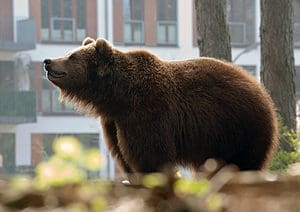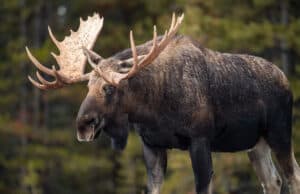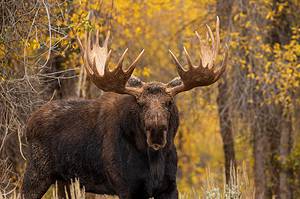Moose are very large creatures that can stand over 7 feet tall and weigh over a thousand pounds. Every year, they manage to find themselves crossing a road at the wrong time and coming into contact with a car. Moose are especially prevalent in areas such as Alaska, Canada’s northern forest, New England, and the Rocky Mountains. They can also be found stretching from Norway to Russia’s Far East in Eurasia.
Let’s dive into what happens when a moose and car meet, and the factors that affect how dangerous a car accident involving a moose is.
Comparing a Moose and a Car
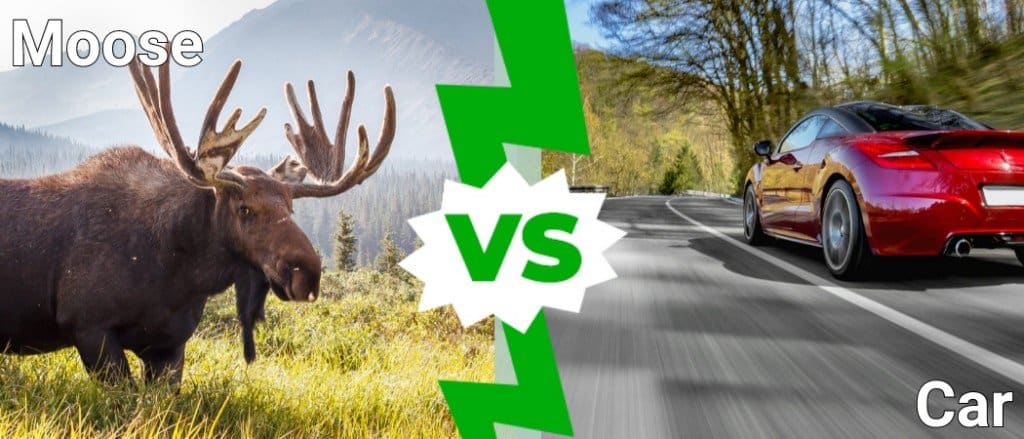
| Moose | Car | |
| Size | Weight: 600lbs-1,500lbs or more Height: 4.6ft-6.9ft at shoulder Length 7ft-10ft | Weight: 3,150lbs-3,430lbs Height: 4.75ft Length 16.3ft |
| Speed | 35 mph | Up to 120 mph or greater |
| Aggressiveness | Highly aggressive and territorial at certain times, especially when defending their young | N/A |
How Dangerous Are Moose Collissions
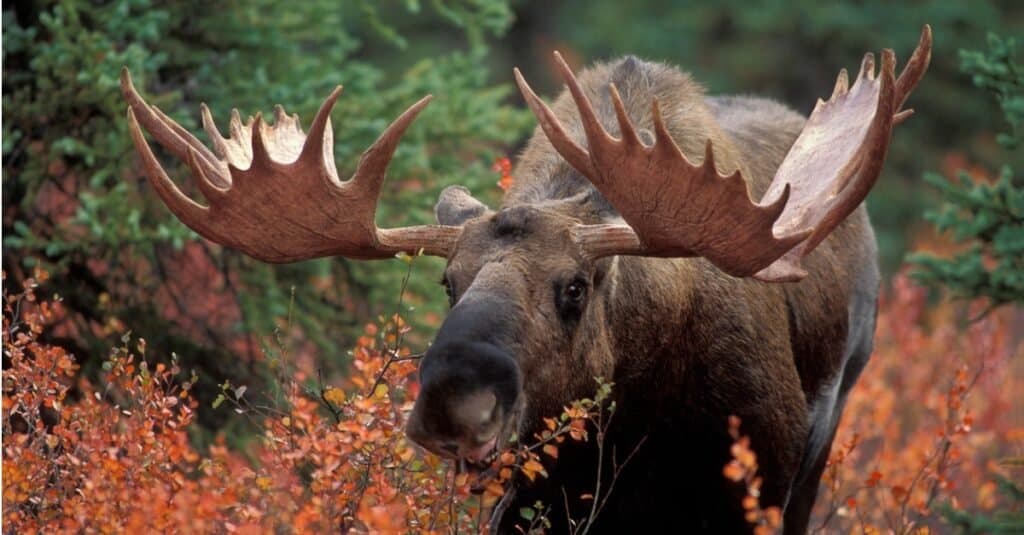
About 1 in 271 accidents in Maine with a moose lead to the driver’s passing.
©iStock.com/RONSAN4D
The best summary of the dangers of Moose collisions comes from the Journal of American Surgeons. A study of moose collisions in Maine found that about 500 moose collisions occur in Maine each year and they’re 13 times more deadly than a crash with a deer.
The raw numbers are as follows:
- Between 2003 and 2017 there were 7,062 colissions with moose and 50,281 with deer.
- 26 moose colissions led to the death of a car occupant while only 10 deer colissions led to a fatility.
- That means .37% (1 in 271) accidents with a moose lead to fatility while deer colissions are fatal just .02% of the time.
It should be noted that moose collisions are down dramatically in New England since the 1990s. In addition, increasing the safety of cars plays a factor in fatality rates. For example, in Sweden, there are 4,500 moose accidents annually and only 10 to 15 deaths. This is lower number is partially because their cars are better designed to withstand accidents with moose.
There are about 500 moose collisions annually in Alaska. Reports from the state are that about 20% of collisions lead to injury and .5% lead to a fatality. Studies in Canada show that moose collisions across a 15 year period (2000-2014) led to nearly twice as many deaths as deer. Canada saw 236 deaths from moose accidents, 123 from deer, and 6 from elk across those 15 years.
What Factors Affect a Car Accident with a Moose?
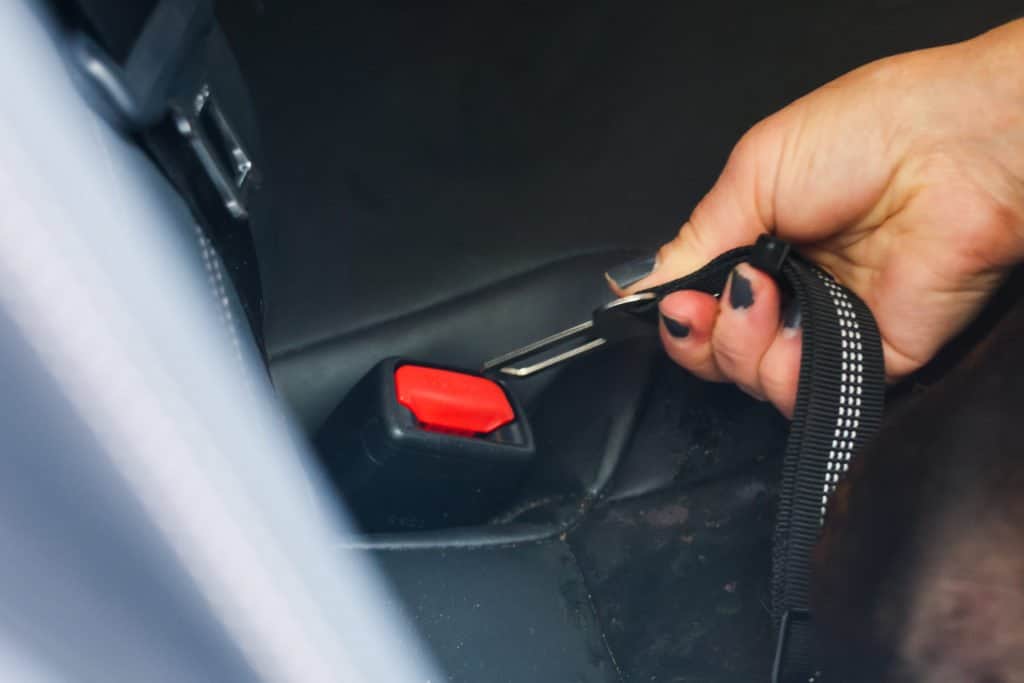
We need to consider why a vehicle would meet a large mammal and how they measure up against one another. That’s why we are going to consider several physical elements along with external factors that could decide how an accident turns out. Take a look at four pieces of information that would impact the outcome of this interaction.
Moose vs Car: Size Comparison
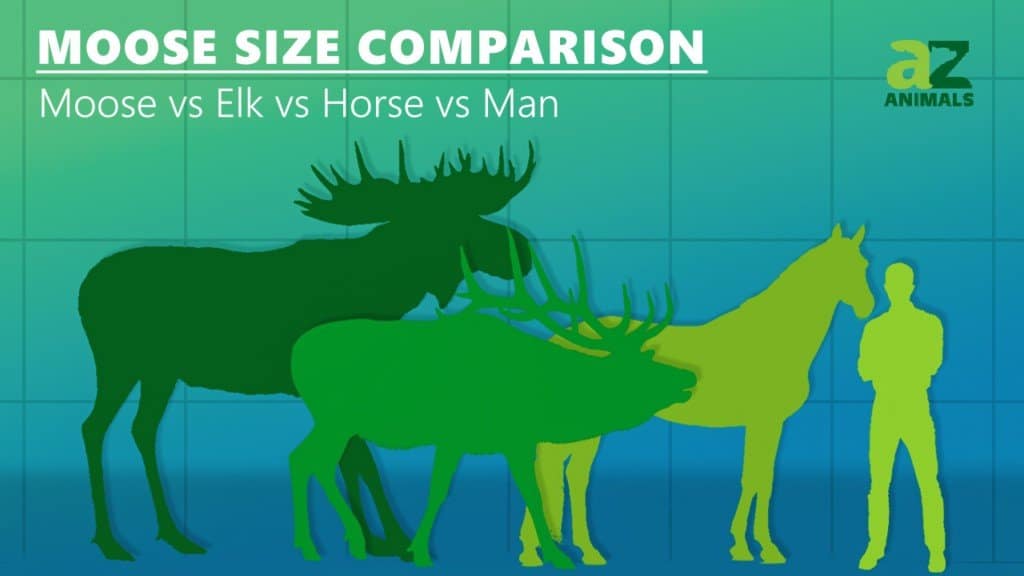
A car is larger and heavier than a moose overall. A moose can weigh up to 1,500 pounds, stand 6.9ft tall, and grow 10ft in length, but a car can weigh 3,500lbs or more, stand 4.75ft high, and measure 16.3ft long. The sheer size of the vehicle compared to the moose should give you an indication of what happens when a severe collision occurs.
It’s worth noting as well that moose have significantly longer legs than deer. Thus, collisions with moose tend to strike their legs and send the animal into the roof and windshield areas. It’s both the increased size and body composition of moose that make them so much more dangerous in a collision. While the risk of death in a collision with moose is remote (1 in 271 in Maine, for example), we noted earlier that 20% of accidents in Alaska led to an injury.
Moose vs Car: Speed
Moose can run up to 35 miles per hour, which is a speedy rate for such a large mammal. So while they may look like plodding animals, they can move at faster speeds than expected. However, the issue of speed is a bigger factor for drivers. Simply put, the faster a car is moving the less time a moose has to react. In addition, greater speeds lead to more serious collisions. In general, car collisions at low speeds have a 1% chance of serious injury at low speeds and a 52% chance of serious injury at 50 miles per hour. Once collisions happen at speeds above 70 miles per hour or more, fatalities are nearly certain. While a moose collision doesn’t have the force of two cars colliding, this basic relationship of higher speed leading to worse outcomes holds.
Moose vs Car: Time of Day and Seasons
Finally, time of day is a major factor in moose collisions. Surprisingly, in the Maine study of moose collisions, researchers found that the risk of moose accidents was three times greater during the middle of the day! The key factor is likely driver speed. In addition, the researchers found that most accidents happen in late spring and across summer.
The photo featured at the top of this post is © iStock.com/RichardSeeley
FAQs (Frequently Asked Questions)
Can a moose destroy a car?
Yes, 20% of accidents with moose lead to injury. While the risk of death when colliding with a moose is much lower (less than 1%), they often fall on windshields and car roofs. This can lead to significant admage.
Should you speed up to hit a moose?
There are stories online that speeding up to hit a moose will send them over your car. The opposite is true. Higher speeds generally lead to an increased risk of serious injury when colliding with moose.
Thank you for reading! Have some feedback for us? Contact the AZ Animals editorial team.




